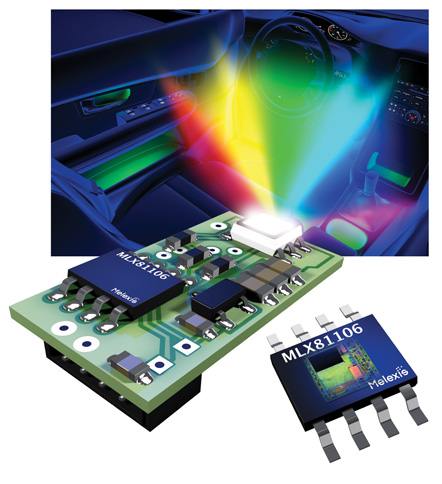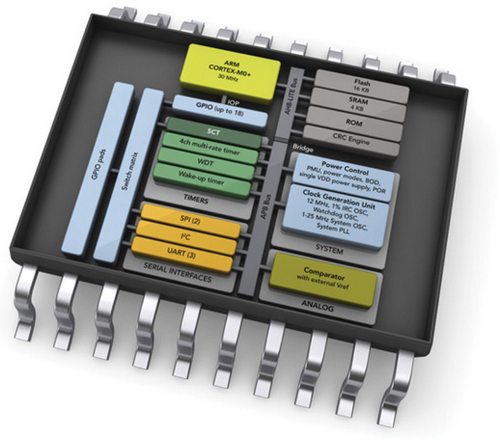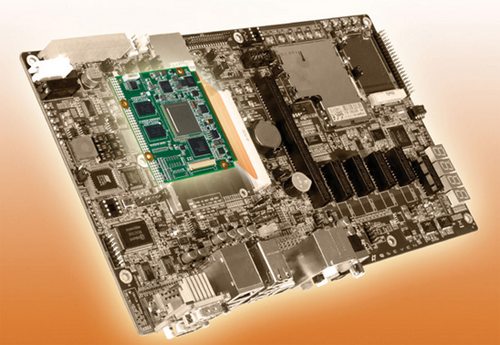The electronic industry’s premium European event delivers as usual, and Digi-Key was there to discover the latest innovations.
Introduction
If you are serious about the electronics industry, there is really only one event in Europe that you absolutely must attend – electronica. Held every two years in the immense exhibition center in Munich, Germany, which in November accommodated over 2,600 exhibitors from 49 countries, it really is the industry’s premier exhibition and conference. Digi-Key was present, as it has been for the last four events, making sure they were not only meeting the current needs of their European customers, but also future demands, by keeping up-to-date with the latest developments.
For those who were not able to attend, here is a roundup of the most significant developments from this year’s event — and be sure they will soon also be on our stock list for all our customers, wherever in the world they are based.
Automotive
Norbert Bargmann, Deputy CEO of Messe Munchen, commented that automotive electronics, which accounts for an ever-increasing share of modern motor vehicles, was a central theme in all exhibition categories, buoyed by the interest in electric and hybrid vehicle technology – an area where electronics will play a key role.
The widely-reported increased semiconductor content in automobiles is not always about what’s under the hood; infotainment is a growing area of interest and, it seems, so too is the ability for individuals to personalize what can often represent our second-most expensive possession. One example of this came from mixed-signal specialist Melexis Microelectronic Integrated Systems.
Melexis introduced its first single-chip LIN (Local Interconnect Network) enabled RGB LED slave, claiming it addressed the emerging demand for LIN RGB ambient lighting systems. It integrates four constant-current sources for directly driving four LEDs at up to 35 mA, along with a 16-bit microcontroller (MCU), LIN transceiver and LIN controller. The LIN protocol handler meets all LIN standards, including LIN2.x and SAE J2602.
 |
|
|
Figure 1: |
Melexis is targeting automotive ambient lighting systems with a LIN-enabled RGB LED Slave. |
The same application area has drawn the attention of ON Semiconductor, also at the exhibition, who announced its own version of the same device: a LIN-based, single-chip driver for dedicated multicolor LEDs for interior ambient lighting. Its solution, which falls in to its ‘System Basis Chip’ category (or SBC), integrates an RGB driver with three independent LED current regulators and a LIN interface for parametric programming of LED color and intensity. ON Semi explained that in a typical manufacturing flow, the NCV7430 would be assembled alongside an RGB LED chip, which could then be calibrated to compensate for LED spread. Auto-addressing allows differentiation between nodes.
Of course, safety remains paramount in the automotive industry and during the conference, Freescale and Continental announced that they are jointly developing the industry’s first quad-core microcontroller (MCU) specifically targeting a fault-tolerant environment. The project is named QUASAR, which stands for Quad-core microcontroller for Automotive Safety and Reliability.
Designed to meet SIO 26262 ASIL D and SIL3 according to IEC61508 applications, the cores run in lock-step with full symmetry, so there is no need to partition the software into safety-relevant and safety-not relevant categories. Freescale also confirmed that the low-level drivers developed for the family will be AUTOSAR 4.0 compliant, augmented by cycle-accurate simulation software for virtual prototyping.
Microcontrollers
In the world of microcontrollers, there are two parameters that are becoming more of a focus for manufacturers – power and cost. While both have always been important, today they not only differentiate a device but also effectively determine its viability in a number of low-end applications. As 32-bit ARM Cortex-Mx-based devices continue to make inroads in displacing 8- and 16-bit architectures in this application space, the power/cost parameters have proved difficult to match in a device that features a more powerful core. Until recently, that is.
Freescale was first to market with its ARM Cortex-M0+ based MCU family, Kinetis L, but now its position is being challenged with the latest development from NXP. For this class of device, customers seem to be demanding two things – a power consumption of less than 100 μA/MHz and a unit price of less than $0.50. Freescale managed to hit both of these targets with the Kinetis L, but NXP is hoping to break through them with its LPC800 family of ARM Cortex-M0+ based MCUs, which also consumes less than 100 μA/MHz, but will sell at less than $0.40 in volume, with a sub-$0.30 version coming ‘soon’.
NXP announced the LPC800 at electronica, stating that it has been developed ‘from the ground up’ specifically to replace 8-bit devices. The company even plans to make a version in a DIP-8 package.
While the family is based on the same super-slim Cortex-M0+ core as the Kinetis L, NXP has managed to differentiate the LPC800 family by employing an innovative solution to overcoming pin position and I/O conflicts, using what it calls the flexibly switch matrix. This allows any I/O to be routed to (almost) any pin and, it was indicated, means it could be configured as a pin-to-pin compatible replacement for other (8-bit) devices.
Another innovation — intended to help keep system power down — is a pattern matching engine, which provides a way of intelligently interrogating peripherals to determine when it is necessary to issue an interrupt, thereby allowing the core to remain in a deep sleep mode for longer.
 |
|
|
Figure 2: |
NXP’s LPC800 aims to take on 8- and 16-bit microcontrollers in terms of power, cost, and simplicity. |
Single-board computing
While Freescale is seeing success with its low-end Kinetis L family, the company also announced at electronica that its i.MX 6 Series of ARM Cortex-A9-based application processors has gone into volume production. This family of pin-compatible single-, dual- and quad-core devices spans a wide performance range and is already proving to be popular with single-board computer manufacturers.
Just prior to electronica, MSC announced it will start sampling its QX7-IMX6 board, which complies with the Qseven format and features the i.MX 6 processor in single-, dual- or quad-core configurations.
The Qseven format is expected to become an SGET standard by the end of the year, according to congatec. During electronica, the company announced the availability of a new Qseven starter kit based on its conga-QMX6 module. Since entering the SBC arena, there has been speculation that ARM-based devices will be popular, thanks to their scalable performance and large ecosystem. Freescale is arguably the main large semiconductor manufacturer to focus on the SBC, so far, and there is growing interest in its availability in the Qseven format. The conga-QMX6 module incorporates high-end 3D graphics applications and is matched with congatec’s Qseven carrier board and comes with a microSD card with Ubuntu pre-installed.
 |
|
|
Figure 3: |
congatec’s QMX6 module employs the latest ARM-Cortex A9 based processors from Freescale. |
In order to deliver a wide range of board support packages for the conga-QMX6 module, congatec also announced a new partnership with Adeneo Embedded. The first BSPs will support Linux, followed by Windows Compact, but it is unlikely that Android will be supported, while support for Windows RT will be ‘customer-driven’.
Adeneo is already a member of the Freescale Design Alliance Program and has worked with both congatec and Freescale in the past to develop low-level drivers, however this partnership ‘cements’ that relationship with the aim of bringing full BSPs to market.
To be continued...
